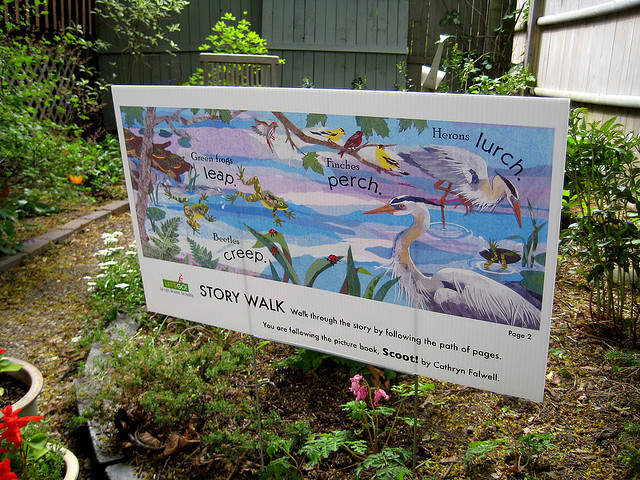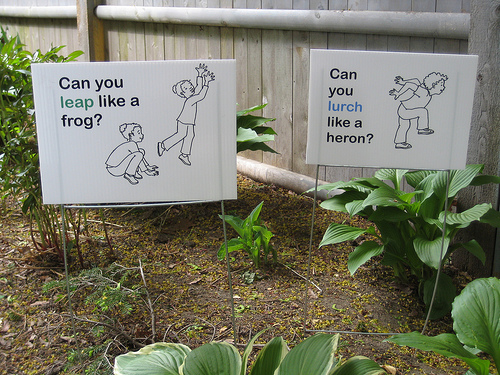Yesterday, I had a very interesting and disturbing encounter with a customer service rep of a large distributor I do business with every day. As can happen, I inadvertently received a box intended for a Vermont library from my brand new Fed Ex driver. My co-worker called the distributor’s customer service number and asked that they send a call tag so the books could find their rightful home at the library.
I did not think this was a tough request. Apparently, I was wrong. Poor JP was so befuddled by the procedure that the distributor was recommending, she handed me the phone. I spoke with the rep, Christine, who was very pleasant, and she told me to either destroy or donate the books. I was confused. Destroy or donate perfectly good books? Why not just send them to the right place? Well, because these were library books, and had been prepared for that particular library, I was told it would be more cost-effective to just reprocess them than pay for the shipping.
So, now I’ve got a box of books intended for a specific library that the distributor will not help me get to them. So I took matters into my own hands. I called the librarian and explained the situation. Dave was really sweet and appreciative when I told him I would send him the books if he would reimburse me for shipping. He agreed, and I got the books ready to ship. I thought I was done.
Well, two hours later I got a call from Christine. She said they were sending a call tag for the books. I told her I’d already taken care of it and was getting the books to the librarian. She sounded mad when she said, “Just do I what I say. You should have waited.”
Waited for what? I was told to dispense with the books. I did. I got them back in the hands of the right person. She was furious. I’m still not sure why she was so mad. I did exactly what I was told to do, I got rid of the books. I have no idea if the library then called to cancel their order, but if the books were going to be free, did she have any right to be that mad?
Since when is a mis-ship something that I have to deal with by donating or destroying it? Especially when an electronic pick-up tag is a few keystrokes away. And, when is being yelled at by a customer service rep, for doing exactly what they said, considered good customer service? I am confused by the blatant destruction of books (see my post about stripped covers) that is occurring in this lean publishing time. I wish everyone who told me to donate books spent time at stores trying to donate them. While I love the idea of donating books, it’s costly to prepare them, both in shipping expense and staff time.
So, I guess it’s true that no good deed goes unpunished. But I’m loathe to see what comes in on Monday for fear of needing to call customer service.
Perfect Planning School Events
Josie Leavitt - September 22, 2011
In this season of amazing author events at the Flying Pig, we’ve had more offers of authors wanting to go into schools. Most schools leap at the chance to have an author come to their schools. But a good school event needs to be planned and all too often I’ll get a rather blasé email from publicists three to four weeks before a scheduled store event, saying, “Oh, so-and-so would love to go to a school.” That’s great, but schools often need more time to plan a good event.
Here is my dream list of planning a great school event:
– Allow me time to plan the event. In a perfect world, planning at least six months ahead gives me the best chance to get the teachers not only excited about the visit, but gives the kids time to read the books, thereby increasing possible book sales. Curriculum in Vermont is determined by individual school districts and while there is some flexibility, it’s hard to justify a visit from a fantasy author if the kids are spending the year studying Early American history.
– Please include what sort of presentation the author would like to do when sending the initial email. This saves me having to write an email asking what sort of presentation the author likes to do. A really handy thing would be a paragraph or two I can send to schools explaining what the author will do. Including educational criteria in the proposal would be extraordinary. The more curricular links I can help teachers out with, the better likelihood the event will get approved and the books read.
– Any promotional material that supports how the author will tie into the curriculum is a great thing for me to send to the school. Some teachers, especially those in public schools, really have to fight for authors to come to their school. I once had a teacher pass on a Newbery winner because her principal said the author visit “was intrusion, not enrichment.” As more and more schools are bound to their test scores, this is more and more likely to happen, unless the visit can fit in the school’s academic vision. Personally, I think any author visit can fit in instruction by working on writing or research skills, but often this just needs to be spelled out.
– Sending a book or two (or 10 as the case was with one publisher recently) to the school is a wonderful way to get the kids excited about the event, especially if there is no money left in the book budget.
– Know that not every school visit is about selling books at the visit. Some kids are reluctant to buy books when they haven’t yet met the authors. Some schools don’t turn in the order forms in a timely way. Often, we’ll do more book sales after the authors have been to the school. There are kids who care deeply about getting a personalized book, and some who don’t. Often what happens here is after the authors visit their school, kids will then come to the store event and buy heaps of books.
– Lastly, keep sending authors to schools. Kids and teachers love them, but give us a little more time to plan them successfully.
What else should be added to this list? Please chime in and I can create a master list incorporating all the comments.
What a Bookseller Dreams About
Josie Leavitt - September 20, 2011
Everyone dreams about their job. I know Elizabeth had a wonderful post about this very subject two years ago. My dream life this week has been entirely event-specific.
This week is the start of a really crazy event schedule with events Wednesday through Saturday, and this is just the beginning. Between now and November 19th we have more than 20 events. Sure, to some stores this is par for the course. But for our store, staffed by five part-timers, this is really quite a schedule. One way I deal with event anxiety is by dreaming about events that go horribly, horribly wrong. I feel like this approach allows me to have the bad events in my sleep, thereby freeing my waking self to enjoy the actual events that may or may not be stellar.
Take last night’s dream. Lois Lowry is coming to the store on Wednesday. I sort of keep telling myself, *the* Lois Lowry is coming. The Giver is one of my all-time favorite books and the author is coming to my store. I feel pressure to make this a really great event. Elizabeth and I are doing everything we can to make this event worthy of its guest.
Most all event dreams begin with the panic that there are absolutely no books. None. And there are lots of people who want them. In this dream there were no books and no attendees at first. I think every bookseller worries about having an event and no one showing up for it. There is nothing you can do about it but make the author comfortable and hang out. But still, it’s a nightmare in real life.
So, in this dream, finally, some stragglers come to the event. We’re all ready for the event except that all the chairs are facing the wrong way. I ask everyone to turn their chairs around, and now, inexplicably, the room is too small for everyone. Poor Lois can barely sit at the author desk. There are only six people and now they’re mad. I’ve disappointed one of my favorite authors, there are no books, and the event space is still shrinking.
I wake up nervous. Then I realize that I do have books, many folks have already RSVP’ed, and to the best of my knowledge the event space has never once changed its size. Elizabeth’s email blast went out this morning and in the span of less than half an hour, more than 30 people called to reserve space for Lois Lowry, and the numbers kept rising all day.
So, tonight I can go to sleep knowing I’ve got enough books (I counted), we already have a great crowd that will only grow for Lois Lowry and the other events this week. But I’m a planner, even in my sleep, so it wouldn’t be out of the question to start dreaming about not having any books for the holiday season.
Why Must We Continue to Strip Covers?
Josie Leavitt - September 19, 2011
I have come to the realization why I try not to carry mass market books–it’s because I can’t bear the idea of stripping the front cover off and destroying a perfectly good book if I need to return it. Why do mass market books get stripped and all other books can be returned whole, to be resold?
It seems to me that destroying a perfectly good book that is not likely to get damaged in the box back to the publisher is wasteful and a travesty. Why are publishers asking bookstores to destroy books? I have never been able to do that, much to my store’s own financial loss. Am I supposed to just throw these books in the recycling dumpster? Or the trash? While I love the idea of making donations to worthy places, sometimes I can’t devote staff time to organizing and boxing them up.
If publishers can handle trade paperback and hardcover returns (these are much more likely to get damaged during the journey back to the publisher) why are mass markets books so vexing? I have never understood why pulping books is an acceptable business practice when there are so many who need books. How about donating the books that are destined to be pulped to any of the myriad of town and school libraries that are desperate for books? What about creating classroom sets of classics that come in a mass market size? Are mass market books so much harder to deal with? There are plenty of other paperbacks I return, specifically kids’ books, that are less expensive than mass markets, and I’m not told to destroy them and throw them away.
So, as someone whose heart actually hurts on the rare occasions I’ve stripped a cover, I really think there has to be a better way.
Overlooked by the Caldecott?
Elizabeth Bluemle - September 15, 2011
Throughout the year, as I unpack new releases and stock and restock older favorites, I come across fantastic illustrators whose work is wildly accomplished and unique but has not yet garnered Caldecott award recognition. Some of these artists have earned enormous popular success; others haven’t. In either case, my mind is set to wandering, pondering what we value artistically and why, and the social contexts that influence all of us as we assess and award/assign significance to literature and artwork, especially that aimed at an audience other than ourselves.
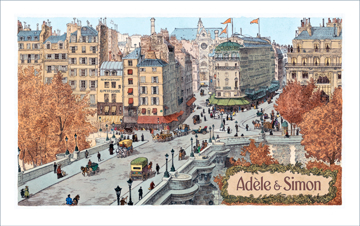 I understand that the Caldecott Medal cannot conceivably recognize every distinguished artist of children’s books out there, but there are some omissions that truly amaze me. In recent years, Jerry Pinkney topped my “frothing-at-the-mouth outraged” list of under-awarded artists of incredible achievement; happily, he has finally gotten his Caldecott due. However, I remain gobsmacked by the fact that Barbara McClintock has not received a Caldecott Medal. Thirty-seven astounding books (and counting) and never even a
I understand that the Caldecott Medal cannot conceivably recognize every distinguished artist of children’s books out there, but there are some omissions that truly amaze me. In recent years, Jerry Pinkney topped my “frothing-at-the-mouth outraged” list of under-awarded artists of incredible achievement; happily, he has finally gotten his Caldecott due. However, I remain gobsmacked by the fact that Barbara McClintock has not received a Caldecott Medal. Thirty-seven astounding books (and counting) and never even a 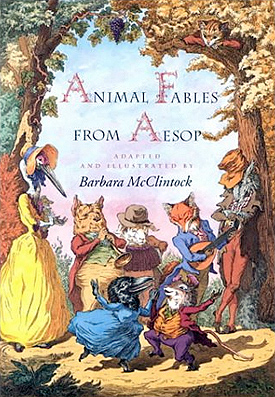 Caldecott Honor? Come ON! How is this even possible?! It’s as though she exists in a parallel universe where genius is taken for granted and time and again, is brushed aside. What on earth more could she produce to prove her chops as an artist of unusual ability and timeless quality? It’s actually absurd at this point. (Frothing, people. Nearly rabid.)
Caldecott Honor? Come ON! How is this even possible?! It’s as though she exists in a parallel universe where genius is taken for granted and time and again, is brushed aside. What on earth more could she produce to prove her chops as an artist of unusual ability and timeless quality? It’s actually absurd at this point. (Frothing, people. Nearly rabid.)
Maybe there’s an Aesop’s Fables curse. Both Pinkney and McClintock have taken on the tales, and perhaps there’s some Aesop-y moral about fame and art that reaches out an admonishing, award-stealing hand. But if that’s the case, Pinkney has bested it, and now it’s Barbara McClintock’s turn.
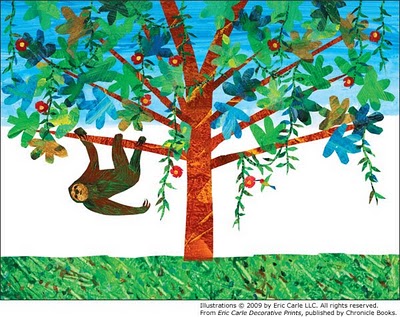 My mind turns, also, to Eric Carle, whose artwork surely meets every criterion indicated by the Caldecott Award, which bestows its coveted annual medal “to the artist of the most distinguished American picture book for children published by an American publisher in the United States in English during the preceding year.”
My mind turns, also, to Eric Carle, whose artwork surely meets every criterion indicated by the Caldecott Award, which bestows its coveted annual medal “to the artist of the most distinguished American picture book for children published by an American publisher in the United States in English during the preceding year.”‘Distinguished’ is defined by the Caldecott folks as:
-
Marked by eminence and distinction; noted for significant achievement.
-
Marked by excellence in quality.
-
Marked by conspicuous excellence or eminence.
-
Individually distinct.
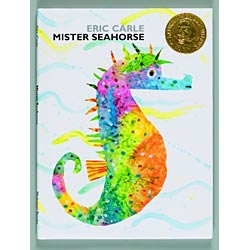 The award criteria detail what, specifically, is to be considered by committee members (the numbered items are drawn directly from the ALA’s Caldecott criteria page):
The award criteria detail what, specifically, is to be considered by committee members (the numbered items are drawn directly from the ALA’s Caldecott criteria page):-
Excellence of execution in the artistic technique employed;
-
Excellence of pictorial interpretation of story, theme, or concept;
-
Appropriateness of style of illustration to the story, theme or concept;
-
Delineation of plot, theme, characters, setting, mood or information through the pictures;
-
Excellence of presentation in recognition of a child audience.
 I’m not sure what more the creator of The Very Hungry Caterpillar, Brown Bear, Brown Bear, What Do You See?, Mister Seahorse, Papa, Please Get the Moon for Me, Dream Snow, and so many other iconic works has to do to get a little respect from Caldie. Sure, the man has his own museum, and that’s got to be, oh, just a bit of a salve, but I am mystified by the oversight, and really, so must he be. The joy in his work brings joy to children all over the world. (Side note for Carle fans: I wrote a blog post that sang his praises a while back, and talked about the moving studio tour he gave to a group of children’s booksellers some years ago, which remains one of the highlights of my bookselling career.)
I’m not sure what more the creator of The Very Hungry Caterpillar, Brown Bear, Brown Bear, What Do You See?, Mister Seahorse, Papa, Please Get the Moon for Me, Dream Snow, and so many other iconic works has to do to get a little respect from Caldie. Sure, the man has his own museum, and that’s got to be, oh, just a bit of a salve, but I am mystified by the oversight, and really, so must he be. The joy in his work brings joy to children all over the world. (Side note for Carle fans: I wrote a blog post that sang his praises a while back, and talked about the moving studio tour he gave to a group of children’s booksellers some years ago, which remains one of the highlights of my bookselling career.)
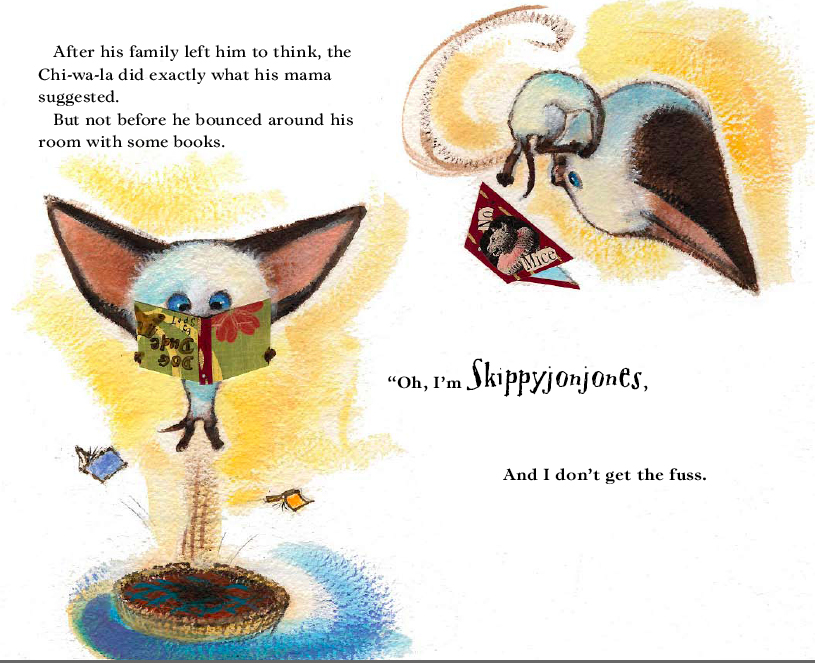 Another worthy contender is the wildly original Judy Schachner. When I look at the Skippyjon Jones books and then scan the Caldecott criteria, I see a big check, check, check, check, triple check! The artwork bursts off the page in glories of color and personality, humor and individuality. It is both bold and detailed (not an easy feat to pull off), brilliant and unusual, a vibrant artistic pleasure for adults as well as children. It is, in a word, distinct. It blends fantasy with realism, does some things with perspective and page layout that I haven’t seen done elsewhere (my camera is on the fritz; I’ll try to update the post with an example of what I mean by this), and is recognizably original — from space.
Another worthy contender is the wildly original Judy Schachner. When I look at the Skippyjon Jones books and then scan the Caldecott criteria, I see a big check, check, check, check, triple check! The artwork bursts off the page in glories of color and personality, humor and individuality. It is both bold and detailed (not an easy feat to pull off), brilliant and unusual, a vibrant artistic pleasure for adults as well as children. It is, in a word, distinct. It blends fantasy with realism, does some things with perspective and page layout that I haven’t seen done elsewhere (my camera is on the fritz; I’ll try to update the post with an example of what I mean by this), and is recognizably original — from space.
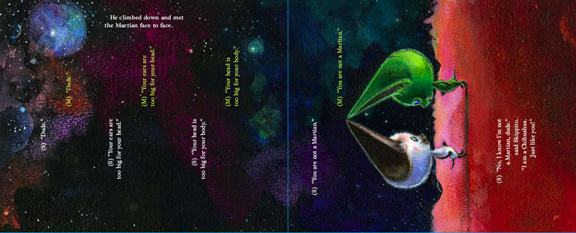
The paintings are both lush and rampant with child appeal. The color palette in these books is phenomenal. So why hasn’t Judy Schachner won even a Caldecott Honor?

Which artists are YOU ready to hop up on street corners to cheer, whose work you think is long overdue for some Caldecott recognition?
It’s Too Early for Christmas and Chanukah (Isn’t It?)
Elizabeth Bluemle - September 14, 2011
 For the fifteen years we’ve been in business, the Flying Pig has always erred on the side of being late to decorate for the holidays. I confess to an intense personal dislike of the commercialization of absolutely everything, which is admittedly a challenging attitude to have as a retailer. I’m also old enough that the day after Thanksgiving used to mark the earliest acceptable date to start putting out Christmas and Chanukah decorations, and that still seems plenty early to me. I know that many of my customers appreciate the fact that we aren’t flogging the holidays, but there are just as many (in increasing numbers as time goes by) who start looking for our holiday books in July and August, and get serious about it by September.
For the fifteen years we’ve been in business, the Flying Pig has always erred on the side of being late to decorate for the holidays. I confess to an intense personal dislike of the commercialization of absolutely everything, which is admittedly a challenging attitude to have as a retailer. I’m also old enough that the day after Thanksgiving used to mark the earliest acceptable date to start putting out Christmas and Chanukah decorations, and that still seems plenty early to me. I know that many of my customers appreciate the fact that we aren’t flogging the holidays, but there are just as many (in increasing numbers as time goes by) who start looking for our holiday books in July and August, and get serious about it by September.
With the economy in its current state, we’ve discovered that many of our customers are now spacing out their holiday shopping, doing a little at a time. In other words, they’re starting earlier, and for good reasons. In the past week, we’ve had four requests for Christmas books, and Josie and I can’t decide what to do about this. Sure, we could take an endcap that we’re currently using for something else, and devote it to holiday books. But in a small store (about 1500 sq. ft.), making that choice means losing something else worthy — for four months! We could set up a rolling book cart—we have one with sale books currently living in the front of the store, the only place it really fits easily—but then those books become the first thing customers see when they walk in the door, which we just can’t stomach this early. We could set up two or three little book bins on the floor in the picture book section, but that would instantly cheapen the books in them. Bin-ification just has that effect.
So it’s a conundrum for us here at the Flying Pig. Heck, I feel guilty having Halloween books on display already. (I only put them out because they were taking up too much space in the back room, and people had started asking for them.) How do we bow to the seasonal pressures to accommodate early shoppers and make sales without alienating people who, like us, prefer to defer thinking about Christmas and Chanukah until—at the most—a month out?
Sunday at the Bookstore
Josie Leavitt - September 12, 2011
Okay, yesterday was decidedly not a regular Sunday, as renowned fantasy writer Terry Brooks was visiting. I worked in the store, while Elizabeth and PJ ran the event in our upstairs loft space.
The day began by checking the email to see if we had more RSVPs and questions about the event. We did. Elizabeth dealt with those while I ran an errand. Terry Brooks’ publicist said that we had to have a microphone, so I went to my friend’s to pick it up. Sadly, a miscommunication resulted in only a microphone being left for me, no cord or stand to go with my amp. It was 11:15 a.m. and Terry was coming at 1 p.m, and the store opens at noon. Okay, time to scramble. Enter Elizabeth, who sped to Radio Shack and got a really decent mic, stand and cord. All that scrambling resulted in Terry not needing the mic anyway, but at least now we have one.
I noticed that Terry Brooks’s fans are as varied as they are dedicated. One couple drove seven hours – one way! – to meet him. I was pretty awed by that. His fans spanned from teenagers to seniors. Several fans actually had rolling suitcases filled with books. I can’t speak more about the event, except to say that I heard laughter in store from the event and many misty-eyed fans came into the store afterwards to say how much they enjoyed the event.
So, while the event was going on I had my hands full with a bustling store. Yesterday seemed to be a great kid day. I found myself listening to a 12-year-old explain to her mom why she had to have The Sono Baking Company Cookbook: The Best Sweet and Savory Recipes for Every Occasion, that’s been out since March. “I’ve been in love with this book my whole life.” Her mom smiled affectionately and the girl, sensing she might just get that book said, “It’s about SWEETS!” They got the book.
Later I found myself embroiled in a heated debate with two 10-year-0ld girls about the relative merits of mermaids. For people who know me, mermaids are not really my thing, but I can see why they’re cool. The mermaid, because she can be in both water and land, is, of course, awesome, it’s obvious.The friend said the fins freaked her out and a mom chimed in that mermaids weren’t always nice.
And then the phone rang. A gentleman with a very heavy Australian accent was calling to find out about the Terry Brooks event. I told him it was almost over, but if he hurried he could still meet Terry. The man chuckled and said,”I’m calling from Melbourne. I wanted to speak to Terry Brooks.” Okay, that’s never happened before. I asked if he knew Terry and he said he didn’t. A kind customer brought the phone upstairs and gave it to Elizabeth who let Terry decide. Apparently, he took the call after clearing it with the folks waiting in the signing line. I know we were Terry’s only Vermont appearance, but to get a call from Australia was awfully exciting.
Lastly, towards the end of the day, one of my favorite older customers came in and told me her wallet, with her Social Security card, got stolen earlier in the week. We discussed why you don’t leave your Social Security card in your wallet. I then spent the next 20 minutes working with the three credit bureaus to freeze her credit so someone couldn’t steal her identity.
All in all, an excellent day.
Getting Ready for Events
Josie Leavitt - September 9, 2011
Our store is turning 15 years old this November. The mere fact of that still astounds me. I keep asking myself, How did that happen? And how has time gone by so incredibly quickly? While I’m not a fan of a decade and half zooming by, I’m loving our author line-up for the next 10 weeks of celebration. We’ve got Terry Brooks on Sunday and then we have a week off and after that it’s pretty much a dead run with events – sometimes two on one day! – until November 19th.
So, how are we gearing for this massive flurry of events? Well, it’s amazing what a dash of panic can do for a staff that’s really organized. We are now hyper-organized, really, it’s a little scary to me. I’m more of a “fly by the seat of my pants” person, and while this style makes me thrive, it makes my staff more than a little insane.
It’s been a very interesting education for me to see what’s making all the staffers anxious about this slew of events. One thing that is concerning to them is what to do if Elizabeth or I are unavailable. This never occurred to me as something to worry about. But it was a huge concern for them. We created a fairly easy fill-in system so every event has a point person who will effectively run the event, from introducing the author to getting the right number of books signed for stock.
Their need for great organization forced me to do something I’ve actively resisted for 15 years: creating a real events checklist. I must say, it felt really good to get the list done. Now that I have something to refer to, I can happily see that we’re farther along than I assumed, and this is a good thing, because I hadn’t realized that my anxiety was starting to get pretty high when I saw all the events on our calendar.
So instead of not falling asleep because I’m counting which authors need event books ordered, I can go back to counting sheep and sleeping like a baby.
Bringing Books to Readers—Outdoors!
Elizabeth Bluemle - September 8, 2011
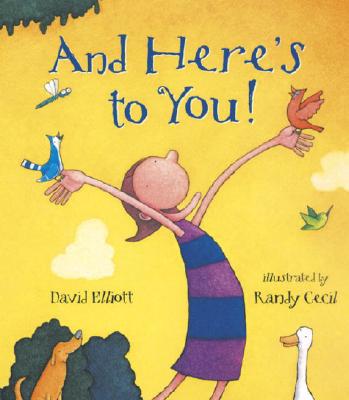 David Elliott and Randy Cecil’s joyous celebration of life, And Here’s to You, is one of my favorite picture books of all time. Of all time! It’s utterly perfect, one of those under-known books I recommend to everyone (along with Linda Smith and Marla Frazee’s Mrs. Biddlebox and Margaret Mahy and Polly Dunbar’s Down the Back of the Chair). So you might imagine my delight when Facebook/book-world pal Kirsten Cappy posted this status update:
David Elliott and Randy Cecil’s joyous celebration of life, And Here’s to You, is one of my favorite picture books of all time. Of all time! It’s utterly perfect, one of those under-known books I recommend to everyone (along with Linda Smith and Marla Frazee’s Mrs. Biddlebox and Margaret Mahy and Polly Dunbar’s Down the Back of the Chair). So you might imagine my delight when Facebook/book-world pal Kirsten Cappy posted this status update:
“Proud to announce that David Elliott‘s picture book AND HERE’S TO YOU and Scott Nash‘s picture book BUGLIEST BUG (both from the marvelous Candlewick Press) will become permanent parts of Portland, Maine’s green spaces. More soon…”
I had to know more. (Not the least of which was, how I had missed Bugliest Bug, which sounds adorable! I love both Carol Diggory Shields’ and Scott Nash’s work, but hadn’t seen the buggy one. This is being rectified.) How were these two books being immortalized in an outdoor space? How were they chosen? How did this work for the authors and their publishers? How can other communities take this amazing idea and bring it to life?
I emailed Kirsten some questions to find out. Aside from my questions in italics, the rest of the post is from Kirsten. Enjoy!
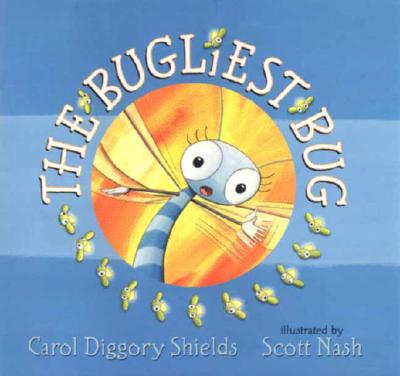 How did this project begin, and how did you get funding for it?
How did this project begin, and how did you get funding for it?
The idea for StoryWalk started in your fair state [Vermont]. Anne Ferguson at the Kellogg Hubbard Library in Montpelier, VT, developed the first The StoryWalk™ Project in collaboration with the Vermont Bicycle & Pedestrian Coalition. Anne and her group simply (and brilliantly) disassemble an actual picture book, laminate it, staple the pages to stakes, and spread the story along a trail or walk—encouraging both physical activity and literacy.
[Anne’s niece,] Victoria Rogers, MD, the medical advisor for the Maine community health project, Let’s Go!, brought the idea to Maine. When Portland was awarded a Communities Putting Prevention to Work (CPPW) grant in 2010, the administrators at Portland Public Health thought of StoryWalk—already a tool in the community health realm in Maine. The grant in Portland is to be used to increase physical activity, and provide more education on making healthy eating choices. Partnering with Curious City and Portland Public Library, the grant produced one mobile StoryWalk using NEST, NOOK, AND CRANNY by Susan Blackaby and illustrated by Jamie Hogan (Charlesbridge).

These pictures of its appearance in the woods of Peaks Island are lovely….
How did you get involved with the project?
After many months of unsuccessful calls to publishers seeking permissions they brought me in, as I consult for Raising Readers, a Maine state literacy project. I decided not to call into the permission/legal dept. of the pubs, but to work with local authors, who would message their editors, who in turn would message the permission/legal depts. Approvals came fast as we pitched it as a great marketing opportunity for the book/author.
How did you choose which books to include?
The books should be of universal appeal, of course. It certainly helps if the books depict appreciation of our grand outdoors or show a character being active. It also helps GREATLY to work with a creator who can serve as an advocate for the program with their publisher or with a publisher who readily picks up the phone. Boston-based publishers Charlesbridge and Candlewick Press gave us immediate and enthusiastic permission. [Charlesbridge gave permission for
THE BUGLIEST BUG by Carol Diggory Shields and illustrated by Scott Nash is a naturally and wildly rollicking read aloud complete with bugs performing great physical feats to be declared the “bugliest bug of them all.” These silly feats and Nash’s hilarious bugs, allowed for some deliciously fun actions for kids to perform as they read the story.
AND HERE’S TO YOU by David Elliott and illustrated by Randy Cecil is simply a perfect picture book. Its celebration of the peculiarities of animals, birds, insects, people, and finally ourselves is a joyful ordering of the world. The location for this StoryWalk is home to many ESL children and adults and I wanted a book that could grow with readers. The right hand page simply states for example, “I love dogs!” –easily read by a new English speaker while the left-hand panel delights in alterative language that a reader can explore over time.
Both books have been “road tested” with Maine readers. AND HERE’S TO YOU was given by the Raising Readers program in Maine in 2006-2007 to over 12,000 4-year-olds. THE BUGLIEST BUG was given to over 12,000 5-year-olds in 2006-2007 and is being repeated to another 12,000+ 5-year-olds currently. I am the book consultant for this amazing health literacy program that has given over 1.6 million books to Maine kids in the last 11 years.
What will the StoryWalk look like? Is this considered a permanent installation? What happens to it in the winter?
Here are some photos of the outdoor site itself. The signs will be approximately 30” x 40” on laminated weather-proof board. They will be posted on cedar stakes and will stay up year round. They will both be in the ground by 10/11/11. The first sign will sport the cover of the book and the following 12 signs will be a photograph of the actual open spread of the book. At the bottom of each sign will be a character encouraging kids to move or pretend some aspect of the action on the page.
For a prior StoryWalks project, I worked with a local company, Banacom Sign, and we decided to transfer digital scans of picture books onto weatherproof real estate signage. Like real estate signage, they came with metal pronged stakes so they could be planted anywhere.
Together we produced signage for two books: SCOOT! By Cathryn Falwell (HarperCollins) and DOWN TO THE SEA WITH MR. MAGEE by Chris Van Dusen (Chronicle). For both books, I designed “actions” or ways to move with the story or characters to increase readers’ physical activity or just PLAY with the book. Cathryn Falwell and Chris Van Dusen were both delighted by this and drew their characters in the various poses. These became smaller signs that ran between the picture book spreads.
Full set of pictures from Let’s Go’s StoryWalks.
Let’s Go! and Curious City have since partnered with other organizations to reprint SCOOT! For example, The Beaver Brook Association in NH reprinted one in association with NH Children in Nature and Coastal Healthy Communities Coalition printed several sets for Maine libraries. (Cathryn Falwell is a big fan of the program and her book has been used in a similar project called Story Trail at the Dawes Arboretum in Newark, Ohio.)
And then Winter Kids worked with us to create one for SNOW DAY! by Patricia Lakin and Scott Nash (Penguin).


What does this mean for the publisher and the author and illustrator, financially speaking, if anything?
No one gains financially off of the project. The project is simply a commitment by publisher, author, and illustrator to community literacy. It is, though, great exposure for all three.
Any tips for other towns or cities considering a project like this?
The StoryWalk Project has great tips on their website for the laminated picture book pages version. I am happy to share budgets and work plans with anyone who wants to explore more permanent options, either portable or stationary.
***
Elizabeth here. I just want to thank Kirsten Cappy for bringing this amazing project to the PW ShelfTalker readership! This makes me want to put StoryWalks in every park around Burlington!
Visiting a Store
Josie Leavitt - September 6, 2011
I was recently traveling out West and my sister-in-law took me to her local store, a well-respected independent bookstore, and I was excited. My excitement was short-lived. I walked in and saw many dark cases filled with books, lovely books. A bookcase of staff picks case contained only one staffer’s choices, but I counted well over 20 books with intriguing, well-written shelf talkers covering an amazing range of current titles. I was impressed by her choices and thought it was a great case to have right by the door as you walked in. Cozy chairs and a table or two sat invitingly by the window. People on laptops sat contentedly. What I saw looked great. But what I didn’t hear once, in the 20 minutes I was in the store, was, “Hello. Let me know if I can help you.”
I saw staffers milling about (the store was not busy) and several looked at me, but kept moving without saying hi or extending any sort of greeting. This was really off-putting. I was in an indie, not a massive big chain store. I expect to be greeted in some way, especially if I’m roaming around. I understand folks need their time to browse in peace; I’m not suggesting following people around the store, but everyone should be welcomed to the store.
I ventured to the children’s section and found no one there. It always bothers me a little when there’s a large kids’ section and no staffer there. To me it sends a message that this section is on its own, and it’s actually the section that benefits the most from help, as customers often get overwhelmed by it. So, here I am alone in a room of kids’ books and I start walking around. The section is organized sensibly, but it looks a bit like it’s suffered a tornado. Books are all cattywampus on all the shelves, books are on the floor, whole shelves are full of books just leaning to one side with massive gaps and the staff picks in this section are from last year. The selection was sparse. I was so disappointed. I was left wondering why they even had a kids’ section. I know I sound critical, but if a store is going to dedicate a fair amount of space to kids’ books, then make that area cozy and inviting and full of books and staffed with someone who knows the section.
This experience rededicated me to the power of good customer service and looking around my store with fresh eyes to see how it looks to someone coming in. Ironically, I stopped by the airport bookstore on my way home, and the woman behind the counter piped up immediately with “Hi, let me know if you need anything.”



